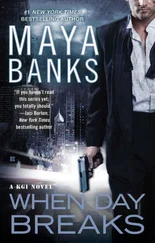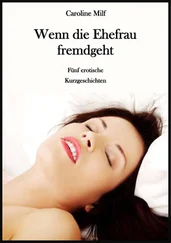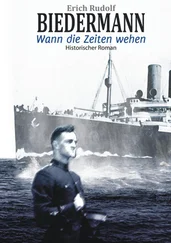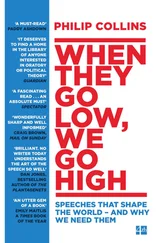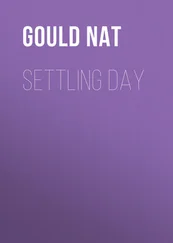Part of coming to terms with death for me was preparing for it in the only way I knew how, which was practically. I told Philip that if he left the funeral to me I was bound to choose the wrong service or the wrong music. So it became a joint project entailing many meetings with Alan Moses and visits to St Margaret’s Church. This plan was to include cremation and burial. But first we needed a plot.
The girls wanted somewhere nearby, so they could visit regularly. Philip and I set off for Highgate Cemetery and met the chief gravedigger, Victor Herman, who took us on a tour of his domain. He pointed out various plots but we were clearly not that keen. As we were walking up the hill to the entrance he stopped and said, ‘Oh, this one may be free.’ It was perfect, right in the middle of things. The sun was shining, the flowers were out and we both felt at peace there.
Back to the office we went, where Victor pulled out a musty old handwritten ledger worthy of Harry Potter, and confirmed that the plot was free. I bought it there and then. Victor has lived his life around death and he combined sensitivity, gravitas and humour in a way that appealed to us and relaxed us both. I genuinely felt we had chosen the right place, a welcoming place.
All this preparation and ritual may seem odd, but for me the practicalities were immensely comforting. It also relaxed Philip, who apart from being insightful was a bit of a control freak. He was reassured that all would be as he wanted it. I knew he worried about me dealing with it alone and didn’t want to leave me with any confusion or worry. It also enabled him to envisage his new resting place, which he found peaceful and soothing.
* * *
Adrian and his team arrived to take Philip to the shoot at 7 a.m. on Thursday 27 October, just eleven days before he was to die. I was worried about the cold and insisted he take a hot-water bottle, a suggestion I think Philip ignored as he was enjoying having so many talented young people around him. I called him continually, knowing how easily he forgot his limits. That Friday we went to the country, where the second part of the interview was to be recorded.
Philip looked very frail and when he walked up the stairs he became a bit breathless. I thought he had caught a chill at the graveyard. By the end of the weekend the breathlessness increased and it was very pronounced on Monday night back at home. I could sense there was something seriously wrong.
The terminal diagnosis loomed in front of us. It was hard not to wonder if this was it. I wanted to call the hospital right away, but Philip insisted on waiting until the morning when we were going in for the chemo that was becoming increasingly difficult for him to tolerate. He was so ill the next morning I called the hospital in advance to arrange an X-ray.
Georgia writes about what happens next. It was the most intense week of my life. All Philip’s closest friends came: Tony Blair, Alastair Campbell, Matthew Freud, supportive of us all as ever. His sister, Jill, of course. And friends from all over were in constant touch.
We created our own little world in that intensive care room, but Philip was fading from us. On his last day of consciousness he asked for his laptop, but he had clips attached to all his fingers and could not type. We took them off and he still could not type, so I said I would type for him. He kept repeating himself and often I would try to tell him he already written something – but he was having none of it. I could hardly bear to listen to his rasping voice, aware of how much every word was taking from him.
He was so intense that day, so fearful, so resisting of death yet also resigned to it. A broken body but a mind still clutching at life – urgent, engaged, desperate to be heard – a life force his cancer-riddled body was trying to extinguish. The previous night he had written on his pad: ‘Wonderful the way Grace, Georgia and you held my hand last night. Total blessing.’
Philip knew death was coming, as Georgia writes. His dreams told him. After the dark stuff he said he dreamt of bright shining palaces and multi-coloured works of art, dancing and joyousness, intricate patterns flashing one after another all leading to a road without end. These dreams were, he said, amazing.
I have discussed the moment of Philip’s death with many friends, some religious and some most definitely not. It was an incredible moment of bliss as he shuddered and died. It was as if I had glanced at infinity and felt the small hospital room suffused with light. My rational self says I probably imagined all of this – that this moment was a combination of emotional intensity, exhaustion and the Gregorian chant we had listened to for ten hours – but I would like to believe it was Philip’s last gift to me as his soul departed.
I am not sure that anyone ever comes to terms with the finality of death. Grief is unpredictable. The first month after Philip died was agony. The grinding, prosaic, formal processes – obtaining the death certificate, probate, making the funeral arrangements – mixing with shock and the inability to grasp what had happened.
For a while after he died, Philip’s BlackBerry sat at the side of my bed, flashing red, but only with spam and circulars. It had been his lifeline for so long, his preferred form of communication, that its deadness now seemed only to reflect his loss. Then one night it rang. I was so shocked that I failed to answer it in time. I turned to Philip to say that some idiot who didn’t realise he was dead was phoning him in the middle of the night. I had forgotten for a split-second that there was no one to tell.
I can easily see how people might be unable to move on after death. I spent the months after Philip’s death feeling truly comfortable only when talking to friends or authors who had been bereaved. I was given reading lists but could concentrate on nothing but poetry. Apart from the medical and feeding paraphernalia, which I got rid of the day after Philip died, I have not been able to move any of his belongings. I fear I am in danger of becoming a little like Miss Havisham. It is the sheer ‘gone-ness’ that is so impossible to process.
People have asked me why I did not take three months off work after he died. I cannot imagine what they think I would have done with the time. Grieving does not confine itself to specific periods.
I am very busy on Philip’s legacy, of which this book is a part, as are the film made by Adrian Steirn and the portrait Image © Adrian Steirn
that can be found at the back of this ebook which will be part of the National Portrait Gallery’s collection. I want to help fund more research and support the charities that are building awareness of oesophageal cancer and how it can be treated and prevented.
I have not worked out the purpose of Philip’s death for me, or for our daughters, Georgia and Grace. For us, the core of our life has simply been ripped away.
If we are to make sense of it, then we will do so through Philip’s fearlessness in the face of death, his understanding that there is such a thing as a good death, and perhaps somehow, through this book, as he carries on touching people’s lives and giving them insights. That was Philip’s great gift when he was alive. Let it continue in death.
Letter to a Friend
Alastair Campbell
The High Mass Requiem for Philip Gould was held at All Saints, Margaret Street, London W1 on Tuesday 15 November 2011 before a packed church which included two former prime ministers, who both read lessons, and many other leading political figures. At the request of the family, Alastair Campbell read out the email he had sent his friend just before Philip died. This is the full text of that email.
Читать дальше

